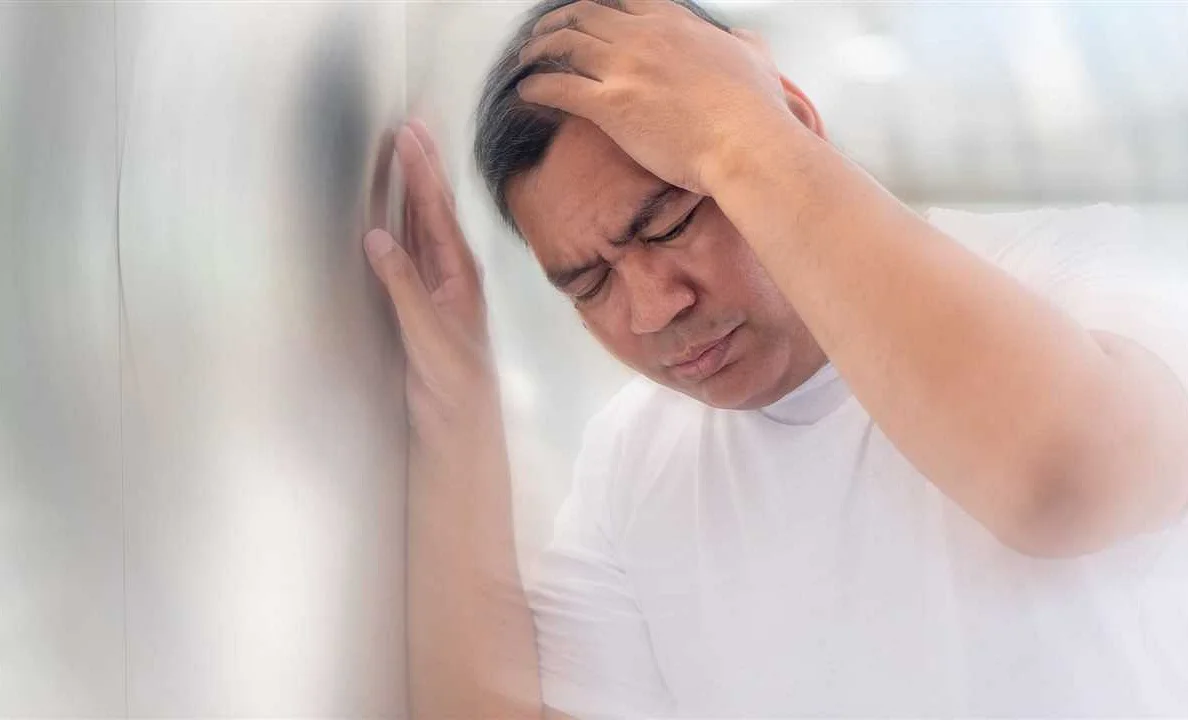Dizziness or Lightheadedness When Standing Up: Causes and Remedies
Dizziness or lightheadedness when standing up can be a symptom of various underlying health conditions. Learn about the causes, symptoms, and treatments for this common issue.
Dizziness or lightheadedness when standing up, also known as orthostatic hypotension, is a common condition that affects many individuals. It can be a temporary and minor inconvenience, or it can be a chronic and debilitating problem for some people.
This condition occurs when a person experiences a sudden drop in blood pressure upon standing up from a sitting or lying position. This drop in blood pressure deprives the brain of an adequate blood supply, leading to dizziness, lightheadedness, and in severe cases, fainting.
There are several causes of dizziness or lightheadedness when standing up. One common cause is dehydration, which can occur due to inadequate fluid intake or excessive sweating. Another cause is medication side effects, as certain medications can lower blood pressure or cause changes in blood flow. Other potential causes include heart problems, nervous system disorders, and certain medical conditions, such as diabetes or anemia.
The symptoms of dizziness or lightheadedness when standing up can vary from person to person, but commonly include a spinning sensation, feeling faint or lightheaded, blurred vision, and difficulty maintaining balance. These symptoms can greatly impact a person’s daily life, making it difficult to perform routine tasks, concentrate, or even stand for prolonged periods.
Treatment for dizziness or lightheadedness when standing up depends on the underlying cause. In many cases, simple lifestyle changes, such as drinking more fluids, avoiding sudden position changes, and getting up slowly, can help alleviate symptoms. For individuals with chronic orthostatic hypotension, medications may be prescribed to regulate blood pressure and improve blood flow.
If you experience dizziness or lightheadedness when standing up, it is important to consult with a healthcare professional for an accurate diagnosis and appropriate treatment plan. With proper management, most individuals can find relief from their symptoms and regain their quality of life.
Overview of Dizziness or Lightheadedness when Standing Up

Dizziness or lightheadedness when standing up, also known as postural hypotension, refers to a condition where a person experiences a sudden drop in blood pressure upon changing positions from sitting or lying down to standing up. This can result in feelings of dizziness, lightheadedness, or even fainting.
Postural hypotension can be caused by a variety of factors, including dehydration, certain medications, heart problems, neurological disorders, or simply standing up too quickly. The condition is more common in older adults, but can occur in people of any age.
The symptoms of dizziness or lightheadedness when standing up can vary from person to person. Some individuals may only experience mild dizziness, while others may experience more severe symptoms, such as fainting or falling. It is important to be aware of these symptoms and seek medical attention if they persist or worsen.
Treatment for dizziness or lightheadedness when standing up depends on the underlying cause. In some cases, simple lifestyle changes, such as drinking more fluids or taking medications as prescribed, can help alleviate symptoms. Other treatment options may include physical therapy or changes in medication regimens.
In conclusion, dizziness or lightheadedness when standing up is a common condition that can affect people of all ages. It is important to identify the underlying causes and seek appropriate treatment in order to manage symptoms and prevent complications. If you or someone you know is experiencing these symptoms, it is advisable to consult with a healthcare professional for further evaluation and guidance.
Causes of Dizziness or Lightheadedness when Standing Up
There are several potential causes for experiencing dizziness or lightheadedness when standing up. These include:
- Orthostatic hypotension: This is a drop in blood pressure that occurs when standing up. It can be caused by dehydration, certain medications, or underlying medical conditions.
- Medication side effects: Some medications can cause dizziness or lightheadedness as a side effect. This is particularly common with medications that affect blood pressure or blood flow.
- Heart problems: Certain heart conditions, such as arrhythmias or heart valve disorders, can cause dizziness or lightheadedness when standing up. These conditions can disrupt blood flow and oxygen delivery to the brain.
- Inner ear disorders: Disorders of the inner ear, such as benign paroxysmal positional vertigo (BPPV) or labyrinthitis, can cause dizziness or lightheadedness when changing positions. These conditions affect the balance system.
- Anemia: A low red blood cell count or low hemoglobin levels can lead to dizziness or lightheadedness. Anemia can be caused by various factors, including iron deficiency, vitamin B12 deficiency, or certain chronic diseases.
- Anxiety or panic disorders: These mental health conditions can cause symptoms of dizziness or lightheadedness, especially in stressful situations or when experiencing a panic attack.
If you are experiencing dizziness or lightheadedness when standing up, it is important to consult with a healthcare professional for an accurate diagnosis and appropriate treatment. They can help determine the underlying cause and recommend the most suitable management plan.
Common Symptoms of Dizziness or Lightheadedness when Standing Up

Experiencing dizziness or lightheadedness when standing up can be a concerning and uncomfortable sensation. It can occur suddenly and may last for a few seconds or several minutes. Understanding the common symptoms associated with this condition can help in identifying the underlying cause and seeking appropriate treatment.
Some common symptoms of dizziness or lightheadedness when standing up include:
1. Feeling unsteady or woozy: Individuals may feel as if they are about to fall or lose their balance when they stand up.
2. Fainting or passing out: In severe cases, the dizziness can be so intense that it leads to loss of consciousness.
3. Blurry vision: Many individuals may experience temporary vision changes, such as blurred or dimmed vision, when they stand up.
4. Nausea or vomiting: Dizziness when standing up can also trigger feelings of nausea or even lead to vomiting in some cases.
5. Feeling weak or fatigued: Standing up may cause individuals to feel weak, tired, or easily fatigued.
6. Rapid heartbeat or palpitations: Some individuals may notice an increase in heart rate or irregular heartbeats when they experience dizziness or lightheadedness upon standing up.
7. Cold sweats or clammy skin: Dizziness can also be accompanied by sweating, particularly cold sweats or clammy skin.
It is important to note that these symptoms may vary depending on the underlying cause of the dizziness or lightheadedness. Consulting a healthcare professional is crucial for an accurate diagnosis and appropriate treatment.
Diagnosis of Dizziness or Lightheadedness when Standing Up

When experiencing dizziness or lightheadedness when standing up, it is important to seek medical attention for a proper diagnosis. There are several potential causes for this condition, and a healthcare professional will be able to determine the underlying cause based on a thorough evaluation.
During the diagnostic process, the healthcare provider will typically begin by conducting a comprehensive medical history interview. This will involve asking questions about the frequency, duration, and severity of the symptoms, as well as any other associated symptoms or medical conditions.
Next, a physical examination will be performed. The healthcare provider will check vital signs, including blood pressure and heart rate, both in a lying down position and after standing up. This will help to identify any fluctuations that could be contributing to the dizziness or lightheadedness.
In addition to the medical history and physical examination, further tests may be ordered to assist in the diagnosis. These tests may include blood tests to check for conditions such as anemia or certain hormone imbalances, as well as imaging tests, such as an MRI or CT scan, to rule out any structural abnormalities in the brain or inner ear.
Furthermore, the healthcare provider may suggest a tilt table test, which involves being strapped to a special table that slowly tilts upright. This test measures changes in blood pressure and heart rate in response to changes in position, helping to diagnose conditions such as orthostatic hypotension.
In some cases, a referral to a specialist, such as a neurologist or an ear, nose, and throat (ENT) specialist, may be necessary to further evaluate and manage the dizziness or lightheadedness.
| Blood tests | To check for anemia or hormone imbalances |
| Imaging tests | To rule out structural abnormalities in the brain or inner ear |
| Tilt table test | To diagnose conditions like orthostatic hypotension |
In conclusion, a proper diagnosis of dizziness or lightheadedness when standing up is crucial in order to determine the best course of treatment. By conducting a thorough medical history interview, physical examination, and possibly ordering additional tests, healthcare professionals can identify the underlying cause and provide appropriate care.